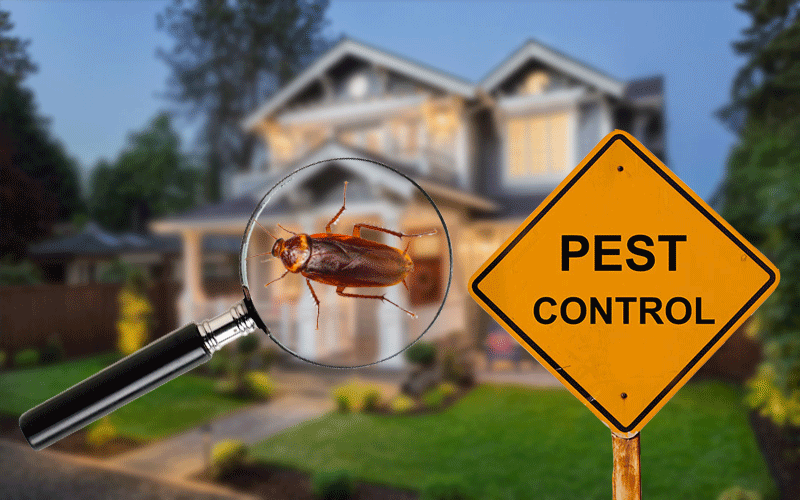Experienced A1 Exterminators Charlotte NC - Quick and Dependable Solutions
Wiki Article
Bed Pest Treatment Break Down: Comparing Chemical Vs. Non-Chemical Solutions
In the world of bug control, particularly when managing the persistent problem of bed pests, the choice between chemical and non-chemical therapy services can be a crucial one. Both methods use distinctive benefits and drawbacks, influencing aspects such as effectiveness, safety considerations, and general expense. By taking a look at the nuanced information of each approach, a clearer understanding of which path to seek in attending to a bed pest problem can be attained.Efficiency of Chemical Treatments
Chemical therapies for bed bug infestations have actually been extensively acknowledged for their quick and powerful efficiency in removing these insects. When taking into consideration the performance of chemical treatments, it is critical to recognize that they can offer a quick and thorough service to a bed bug trouble.Moreover, chemical therapies have the benefit of providing recurring results, meaning that they can proceed to eliminate bed pests even after the first application. This residual action is especially advantageous in combating any potential re-infestations. Furthermore, the rapid action of chemical treatments can bring alleviation to individuals encountering severe bed bug problems, permitting them to restore control of their space quickly.
Safety Worry About Chemical Solutions
One vital element that calls for cautious consideration when making use of chemical options for bed bug therapy is ensuring the safety and security of residents and the setting. Exposure to certain chemicals used in bed bug therapies can lead to respiratory concerns, skin inflammation, or other damaging reactions, particularly in people with pre-existing conditions or level of sensitivities.Additionally, the environmental influence of chemical remedies is one more significant consideration. Some pesticides used in bed insect treatments may be hazardous to useful insects, wild animals, and ecological communities if they seep into the soil or water supply. It is important to use chemical therapies carefully, following security standards, and considering less poisonous alternatives to alleviate these risks and ensure the efficient and secure management of bed bug invasions.
Advantages of Non-Chemical Methods
Thinking about the possible safety problems and environmental impact connected with chemical remedies for bed pest treatment, exploring non-chemical methods provides an encouraging choice with several distinct benefits. Non-chemical methods provide a more secure option for homes, especially those with kids, pets, or people conscious harsh chemicals. These methods remove the dangers of exposure to toxic substances, reducing the capacity for unfavorable health results. Furthermore, non-chemical treatments are environmentally friendly, as they do not add to air or water air pollution, making them a lasting selection for parasite control.Furthermore, non-chemical remedies can be effective in targeting bed insects, consisting of hard-to-reach areas where chemical therapies might not penetrate - A1 exterminators charlotte nc. Techniques such as warm treatment, vacuuming, heavy steam cleansing, and cushion coverings offer detailed removal without the use of damaging chemicals.
Limitations of Non-Chemical Treatments

Additionally, non-chemical treatments typically call for several applications to achieve successful elimination. This can be time-consuming and might not always assure complete elimination of all bed insects and their eggs, particularly in hard-to-reach or surprise areas.
Additionally, the success of non-chemical therapies greatly depends on appropriate execution and thoroughness, which can be challenging for individuals without expert proficiency. Insufficient application of non-chemical approaches might result in incomplete elimination, leading go to this site to consistent invasions and the need for added therapies.
For that reason, while non-chemical therapies have their benefits, it is vital to acknowledge these limitations and consider them when figuring out the most efficient strategy for managing bed bug infestations.
Price Comparison: Chemical Vs. Non-Chemical Options
Offered the constraints related to non-chemical therapies, a vital aspect to evaluate in the context of bed bug monitoring is the expense comparison in between chemical and non-chemical options. Chemical therapies generally involve the application of insecticides by specialists, which can vary from $250 to $900 per area, depending on the extent of the problem and the dimension of the location to be dealt with. On the other hand, non-chemical therapies like warm treatment or heavy steam can be a lot more pricey, with prices ranging from $1,000 to $6,000 for a whole home. While the preliminary price of chemical treatments might appear reduced, multiple therapies may be called for to totally remove the invasion, potentially increasing the general expense. On the other hand, non-chemical choices might provide a much more environment-friendly and lasting option, although they can be cost-prohibitive for some individuals. Ultimately, when thinking about the expense of bed bug therapy choices, it is crucial to consider the in advance expenditures versus the performance and long-term sustainability of the chosen technique.Verdict

Thinking about the prospective safety and security concerns and ecological influence linked with chemical bug control companies services for bed pest treatment, discovering non-chemical techniques offers a promising option with numerous distinctive advantages.Provided the limitations linked with non-chemical treatments, a necessary aspect to examine in the context of bed insect monitoring is the cost contrast between chemical and non-chemical options. In contrast, non-chemical therapies like heat therapy or heavy steam can be more expensive, with prices varying from $1,000 to $6,000 for a whole home. While the first expense of chemical treatments might seem lower, multiple treatments may be required to totally eradicate the invasion, possibly enhancing the read review general expense.In conclusion, when comparing chemical and non-chemical bed pest treatment choices, it is important to think about effectiveness, security, benefits, limitations, and price.
Report this wiki page